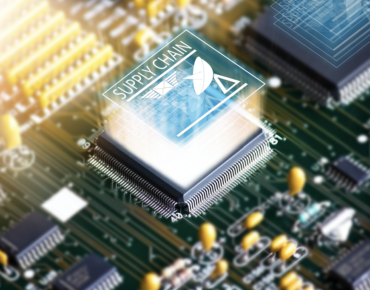Pressure Mounts to Respond to Global Semiconductor Chip Shortage

via Shutterstock
Amid pandemic-related supply chain disruptions, chip makers are urging the Biden administration to include funding and tax incentives aimed at boosting semiconductor manufacturing and research in its economic recovery and infrastructure initiatives.
In a letter released Thursday (Feb. 11), the Semiconductor Industry Association (SIA) urged the White House to implement and fund chip R&D initiatives contained in the fiscal 2021 military spending bill. The bipartisan effort stems in part from supply chain vulnerabilities exposed last year by the pandemic, prompting calls to revive U.S. chip manufacturing.
The global technology competition in areas such as AI and quantum computing are also fueling calls for increased technology R&D funding. The Biden administration has signaled its intention to engage in “extreme competition” with China.
SIA and other industry groups are seizing on the new competitive stance, noting that China is investing heavily over the long term in AI and other technologies. Meanwhile, they assert, U.S. R&D spending remains flat.
“As a result, the U.S. is uncompetitive in attracting investments in new fab construction and our technology leadership is at risk in the race for preeminence in the technologies of the future, including artificial intelligence, 5G/6G and quantum computing,” SIA’s board of directors stated in the letter to President Joe Biden.
Along with increased R&D funding, the U.S. chip industry is also seeking tax credits and grants as incentives for investing in domestic semiconductor manufacturing. “The governments of our global competitors offer significant incentives and subsidies to attract new semiconductor manufacturing facilities, while the U.S. does not,” the industry group asserted.
The growing chip shortage has meanwhile amplified supply chain disruptions in the automotive and consumer electronics sectors. Under pressure from customers, Taiwan Semiconductor Manufacturing Co. (TSMC) this week disclosed fab expansion plans aimed at addressing the silicon shortfall.
TSMC’s board announced it would seek to raise about $9 billion via two bond sales that would finance capacity expansion. In January, the world’s largest chip foundry outlined plans to invest as much as $28 billion in capital spending this year, including initial steps toward construction of a chip fab in Arizona.
According to reports, TSMC has acquired about 1,100 acres of land near Phoenix that would serve as the site of its U.S. foundry operations.
In apparent response to industry entreaties, the White House said Thursday it is working with chip makers and other stakeholders to address the IC shortage. U.S. officials emphasized the administration is “currently identifying potential chokepoints in the supply chain and actively working alongside key stakeholders in industry and with our trading partners to do more now.”
Reuters also quoted a senior administration official, who asserted it is critical “to identify more durable solutions to addressing the longstanding issues faced by the semiconductor industry and the end users of these goods.”
SIA estimates the U.S. share of the global manufacturing capacity has declined since 1990 from 37 percent to just 12 percent today. The group notes that global competitors, most notably China, are heavily subsidized by their governments. Those subsidies place U.S. manufacturers “at a competitive disadvantage in attracting new fab construction.”
A TSMC “mega-fab” in Arizona is also viewed as another way of rebuilding domestic IC production skills, allowing the next generation of process engineers to ascend the foundry learning curve, then applying new silicon and chip packaging designs to emerging AI and other applications.
Meanwhile, U.S.-based fabs are hustling to meet surging chip orders. “Demand is through the roof. All of our fabs are running at or above full capacity,” GlobalFoundries told EnterpriseAI.com. “It's clear demand and supply are out of balance, due to the complex intersection of the COVID-19 pandemic, the global ramp-up to 5G and geopolitical forces.”
A company spokesman added: “We are doubling our planned investment this year to expand capacity and working closely with our customers to manage supply chain challenges to not only address their immediate, but also long-term needs.”
The U.S. foundry is also reassessing its commercial and supply chain alignment strategy, the company said. “Tighter partnerships across the [semiconductor] supply chain will create more certainty and security.”
GlobalFoundries also advocates public-private partnerships to stimulate investments that would “help accelerate capacity expansions at our fabs.”
Related
George Leopold has written about science and technology for more than 30 years, focusing on electronics and aerospace technology. He previously served as executive editor of Electronic Engineering Times. Leopold is the author of "Calculated Risk: The Supersonic Life and Times of Gus Grissom" (Purdue University Press, 2016).











